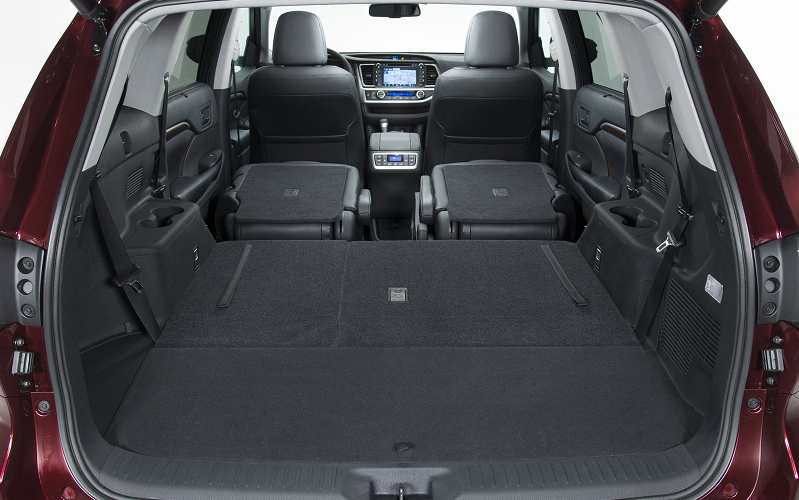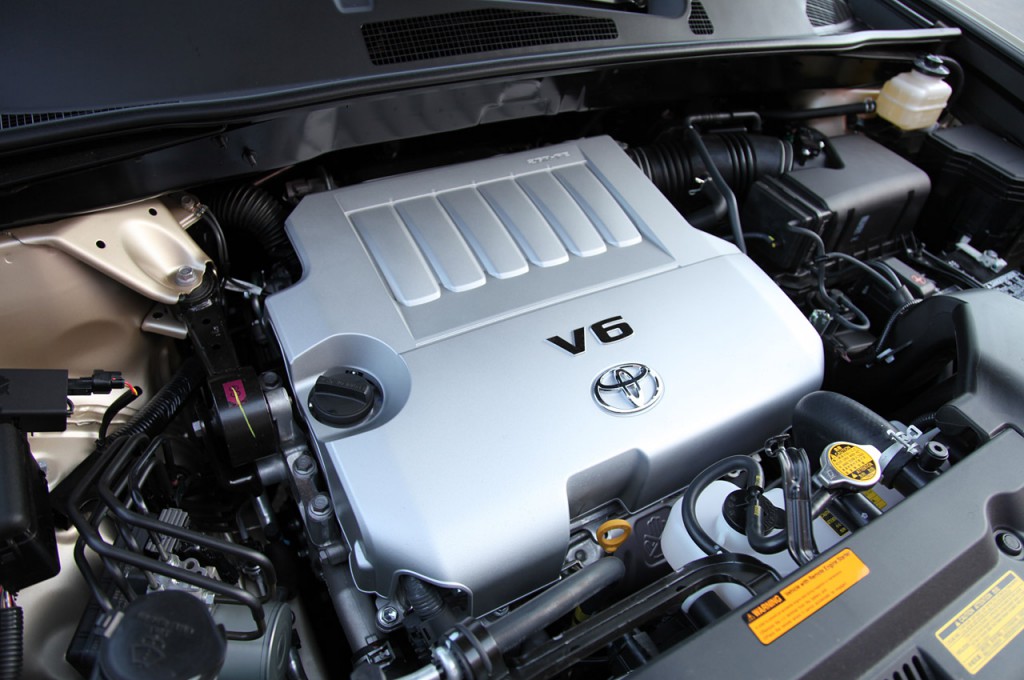The choice of a car is always accompanied not only by an assessment of its design and convenience. Technical data play a key role, because it is the focus on them that allows you to correlate your own aspirations with the expected effect as accurately as possible. Buying a popular SUV like the new Toyota Highlander is no exception.
Criteria
When buying this car in 2014-2015, the following points will become the most important:
- Dimensions;
- Characteristics of engines;
- Fuel consumption.
These points are decisive for the Highlander, so special attention should be focused on them.
Dimensional data
The dimensions of the 2014 Toyota are fully consistent with the segment that it occupies.
- Highlander height - 1,730 mm;
— length — 4 865 mm;
- width - 1,925 mm.
The wheelbase of Toyota is 2,790 mm. At the same time, the front wheel track is 1,635 mm, while the rear wheel track is slightly larger - 1,650 mm. The ground clearance is quite impressive - 197 mm, however, for a car of this class it should be no less.
Wheelbase - 2,790 mm, ground clearance - 197 mm
As for the usable trunk volume of the Highlander, the new SUV boasts 269 liters. But this is with the rear sofa folded down.
If you want to drastically increase the luggage compartment of the Highlander, you can always expand the rear sofa.
As a result of such manipulations, a “hangar” of 813 liters will appear before the eyes, which can be loaded with whatever your heart desires, although such dimensions leave much to be desired.

The mass of Toyota is considerable. In curb condition, the car of the 2014-2015 model year weighs 2,135 kg, and the gross weight is 2,740 kg. In general, the jeep does not show any outstanding performance, but it does not lag behind rivals in its segment.
Engine characteristics
The new Highlander can be equipped with one of the 2 power units available in the arsenal that comply with Euro-5 environmental standards.
2.7 l
The first Highlander is a new in-line gasoline engine equipped with an injector. Its design: 4 cylinders (4 valves for each of them), and the volume is 2.7 liters.
Compression ratio - 10.0: 1;
Cylinder diameter, mm - 90;
Piston stroke, mm - 105;
The valve mechanism is VVT-i.
The maximum power of this Toyota engine reaches 188 hp. sec., but they are available only at 5,800 rpm, which makes driving at maximum power in the city problematic. The peak torque of the 2014 Highlander reaches 252 Nm (at 4,200 rpm).
The dynamic characteristics of such an engine (as in 2014) are not impressive (however, this is largely influenced by the weight of the car). Acceleration to hundreds takes 10.3 seconds. Not bad, but in comparison with German competitors - frankly weak. Max speed reaches 180 km/h. Regarding fuel consumption, it almost does not differ from the 3.5-liter unit.
3.5 l
This new engine is installed on the top version of the Highlander. The design of such a 3.5-liter gasoline engine:
— V-shaped configuration;
- 6-cylinders;
- 4 valves per cylinder;
Compression ratio - 10.8: 1;
Cylinder diameter, mm - 94;
Piston stroke, mm - 83;
The valve mechanism is Dual VVT-i.
The power of the Toyota engine is 249 hp. with., which are available only in the highest speed range - at 6,200 rpm. in a minute. The Highlander engine produces the highest torque only at 4,700 rpm.

The dynamics of such versions of Toyota is noticeably better. The 3.5-liter engine takes only 8.7 seconds to change the first hundred, although the maximum speed is limited to the same 180 km per hour. Gasoline consumption is quite acceptable.
As for the Highlander engines, they can be credited with a relatively simple design (aspirated after all), unpretentiousness, as well as good dynamics and traction. But for 2014-2015, such Highlander indicators do not look like something out of the ordinary. German concerns equip their cars with turbocharged units, which allows you to achieve greater returns with less volume, and consumption cannot be compared with high-torque. Of course, turbo engines are more expensive to manufacture and more demanding to maintain, but this is an adequate price for dynamic performance and explosive temperament.
fuel consumption
The appetite for both Toyota engines is almost the same. For a 2.7-liter engine, these figures are:
Extra-urban cycle - 7.9 liters per 100 km;
Combined cycle - 9.9 liters of fuel per 100 km;
Urban cycle - 13.3 liters per 100 km.
As for the V6, its consumption is not too different from the 2.7-liter, 4-cylinder engine:
Extra-urban cycle - 8.4 liters of fuel per 100 km;
Combined cycle - 10.6 liters of fuel per 100 km;
Urban cycle - 14.4 liters per 100 km.
However, everything is not so simple. Claimed beautiful data on fuel consumption on the Highlander is by no means conclusive. In dense urban traffic jams, engines begin to drink up to 20 liters, so that the fuel gauge needle falls before our eyes. But the problem is also that the Toyota's fuel tank capacity is only 72 liters of fuel, so the range (especially considering the consumption in urban mode) is small. In this case, the presence of diesel engines could solve the situation, but the factory does not install them.
Outcome
Toyota is the new premium SUV. And its technical characteristics fully confirm the status. Powerful and high-torque engines, coupled with impressive dimensions, provide this SUV of the 2014-2015 model year with a worthy place in the segment.
However, there are also shortcomings. These include high fuel consumption, not the most progressive design of Toyota engines and a small trunk.
